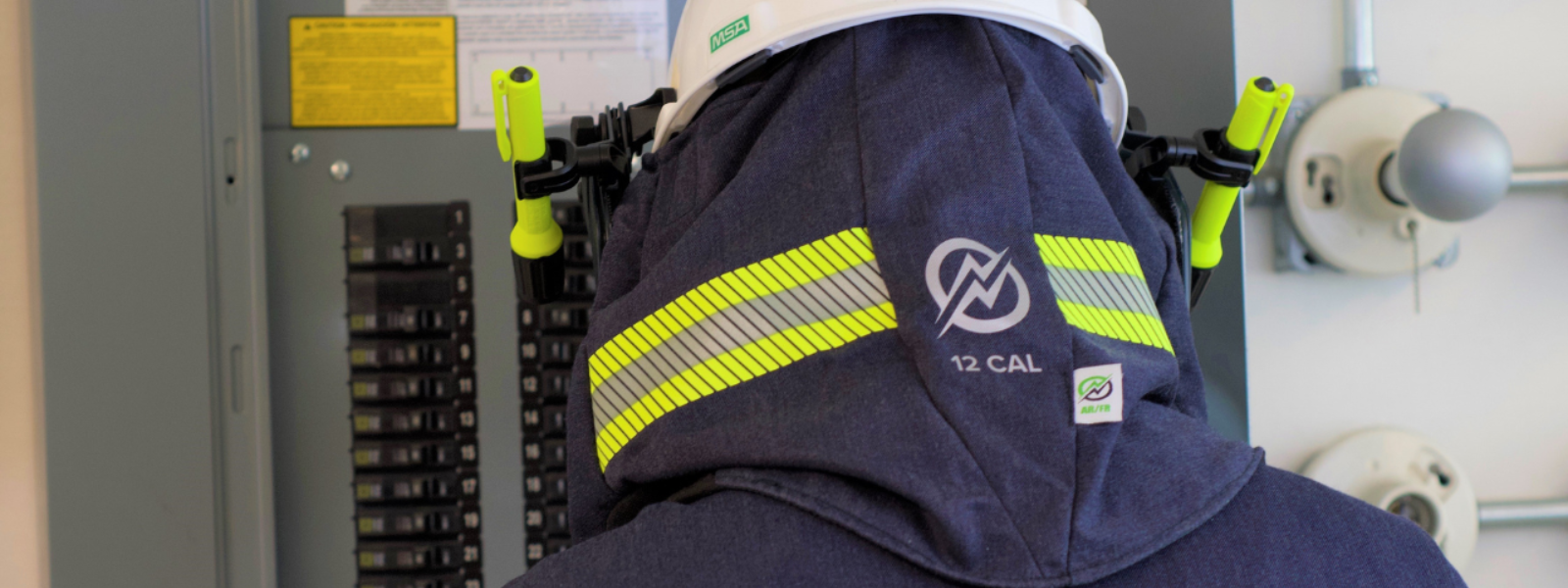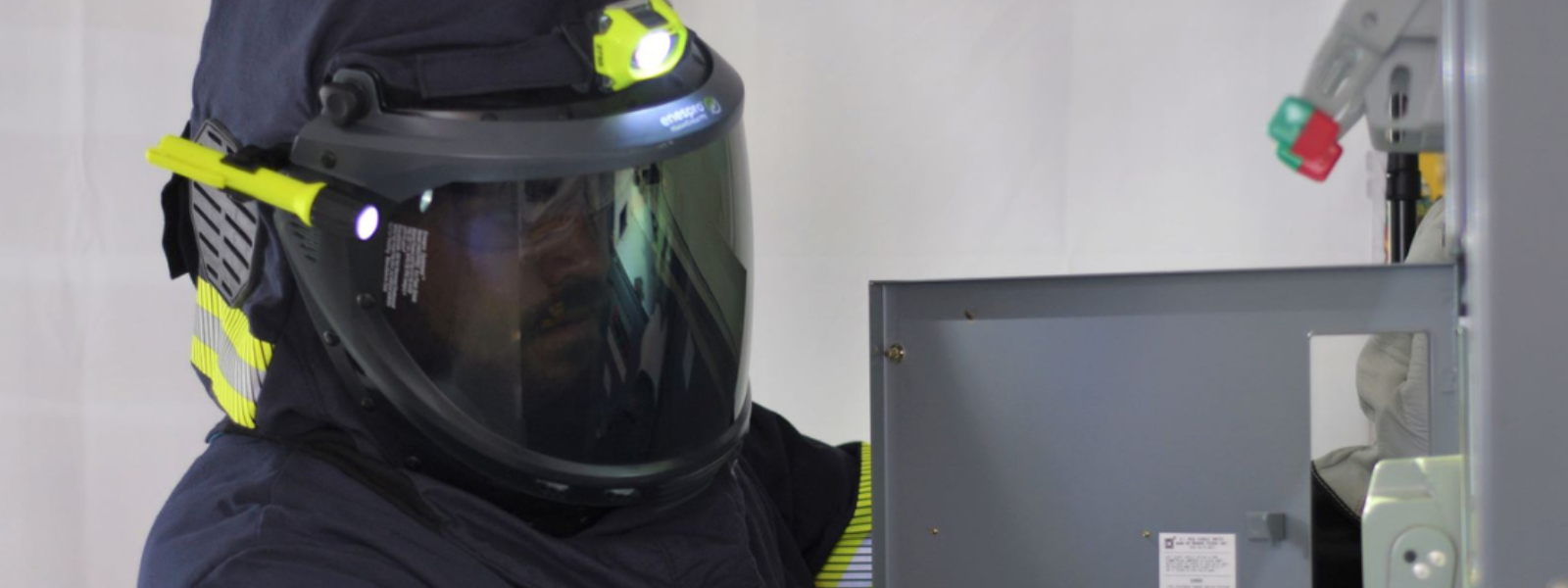Arc Flash PPE for Head and Neck Protection: Making the Right Choice

Arc flash incidents are fast, intense, and unforgiving. Temperatures can soar above 35,000°F, releasing massive energy in milliseconds. Workers in electrical, industrial, and utility settings face severe risks, especially to the head and neck. Without proper protection, they are vulnerable to second-degree burns, vision loss, hearing damage, and even fatal injuries.
Despite these dangers, many workers still wear PPE that is bulky, uncomfortable, or outdated. Some avoid wearing it altogether because it restricts movement or traps heat. This article breaks down the different options for head and neck protection in arc flash PPE, the challenges of selecting the right gear, and best practices for keeping workers safe.
Understanding Arc Flash Hazards to the Head and Neck
An arc flash is an electrical explosion caused by a fault or short circuit. The energy released can cause:
• Extreme heat: Capable of igniting clothing and causing severe burns.
• Intense light: Strong enough to cause temporary or permanent vision damage.
• Powerful pressure waves: Can throw workers several feet and damage eardrums.
• Molten metal spray: Small, high-temperature particles that can burn skin.
Even when wearing a face shield or hard hat, gaps in protection can leave the neck exposed. With the risks so severe, protecting the head and neck requires more than just a hard hat or face shield. A complete arc-rated PPE system is essential, but not all options provide the same level of protection, comfort, or usability.
Choosing the Right Head and Neck Protection
Selecting the proper PPE for head and neck protection starts with understanding the risks and matching the gear to the job. From hard hats, to faceshields & balaclavas, to full hoods, each option serves a specific purpose based on the level of hazard and worker preference.
Hard Hats and Helmets
Hard Hats and Helmets are a baseline requirement for most hazardous environments, but not all are built for electrical work. For proper protection, a hard hat should be ANSI Z89.1 Class E certified. When dealing with arc flash hazards, hard hats must often be paired with arc-rated face protection and headgear to complete the system.
Face Shields and Goggles
Face Shields and Goggles play a critical role in shielding the face from heat, debris, and intense light. However, not all face shields are created equal. Arc-rated shields are specifically engineered with materials such as the injection molded polycarbonate used in Enespro faceshields that are then tested according to ASTM F2178 to withstand various incident energy levels. These are often used in tandem with a balaclava, hood, or shroud for full coverage of the head & neck.
View Enespro Face Shields and Goggles
Balaclavas (PPE Category 2)
In addition to a faceshield, balaclavas offer added protection for the neck and ears—delivering more complete coverage. These close-fitting, arc-rated layers are ideal for Category 2 electrical tasks, providing extra defense without compromising comfort or mobility.
View Enespro Balaclavas
Shrouds (PPE Category 2 Alternative)
Alternatively, a shroud offers similar protection without full face contact. These garments drape around the neck and shoulders and offer increased airflow. Shrouds are a great alternative for those prioritizing breathability.
Full Arc Flash Hoods (PPE Category 4 and Above)
When working with higher incident energy levels, full Arc Flash Hoods are the standard. These hoods integrate the hard hat and face shield into a single system that delivers comprehensive protection. However, traditional hoods can trap heat and restrict airflow—an issue that Enespro has sought to alleviate by incorporating features like vents and dual fans for improved airflow and lift-front face shields for convenient access to fresh air.
View Enespro Arc Flash Hoods
Choosing the right head and neck PPE ultimately depends on the job at hand, the energy level involved, and the working conditions. Balancing protection, comfort, and usability is key to ensuring workers stay safe—and stay compliant.

Challenges in Selecting the Right PPE
Even with clear safety standards, many workers resist wearing PPE due to discomfort, poor ventilation, or limited visibility. If gear is difficult to wear, compliance suffers, putting workers at greater risk. Addressing these challenges starts with understanding the most common complaints.
• Comfort vs. Protection: Many workers resist PPE because it’s uncomfortable, heavy, or limits movement. A balance between safety and wearability is crucial; if PPE isn’t comfortable, workers may not wear it properly.
• Ventilation Issues: Traditional arc flash hoods can trap heat, making it difficult to breathe or see clearly. Poor airflow can lead to fatigue and reduced concentration, increasing the risk of mistakes.
• Visibility and Field of Vision: Face shields can fog up or reduce color recognition, making it harder to work on electrical panels safely. Arc-rated face shields must allow clear visibility while providing protection.
• Compliance with NFPA 70E and OSHA: Safety standards require specific PPE based on the risk level. Employers must ensure their PPE meets the correct arc flash rating to comply with regulations.
To overcome these challenges, safety professionals must balance protection with usability. By focusing on proper fit, ventilation, and worker feedback, companies can improve both safety and compliance.
Best Practices for Choosing and Using Head and Neck Protection
Finding the right PPE is only part of the equation. Proper use, training, and maintenance are just as important. A well-informed approach ensures that workers are protected without compromising comfort or efficiency.
• Assess the Risk: Use NFPA 70E guidelines to determine the proper PPE based on calorie ratings.
• Ensure Proper Fit: PPE that is too loose or too tight can reduce protection and cause discomfort.
• Prioritize Breathability: Look for PPE with built-in ventilation to improve worker comfort.
• Train Workers on Proper Use: PPE is only effective when used correctly; training is essential.
• Encourage Worker Feedback: Getting input from workers can help improve PPE selection and compliance.
Even with the best PPE available, not all gear is created equal. Some manufacturers prioritize comfort and innovation, while others stick with outdated designs that don’t meet the needs of today’s workforce.
How Enespro Can Help
At Enespro, we believe PPE should never be a burden. Our arc flash protection is designed with real workers in mind, providing the highest level of safety without sacrificing comfort or usability.
Innovative, Comfortable Arc Flash PPE
• Lighter Materials: Reduce fatigue and improve mobility.
• Stretch Fabric Balaclavas: Provide a snug yet comfortable fit.
• Vented Hoods and Face Shields: Designed for better airflow and improved visibility with full spectrum color recognition and anti-fog coating.
Advanced Protection Without the Bulk
• Dual-Fan Hoods: Help regulate temperature and improve airflow.
• Lift-Front Face Shields: Allow for convenient access to fresh air without removing the entire hood.
• Arc-Rated PPE That Meets NFPA 70E Standards: Ensuring compliance without compromising comfort.
We listen to safety professionals, electricians, and industrial workers to create PPE that solves real problems. Our goal is to challenge outdated designs and provide better solutions for head and neck protection.
At Enespro, we provide next-generation arc flash PPE that protects workers while prioritizing breathability, visibility, and comfort. If you’re looking for better solutions for head and neck protection, we can help.
Explore our full line of arc flash PPE today.

Stay in the loop.
Sign up for our emails to be the first to know about exclusive product offerings
and all things Enespro.











